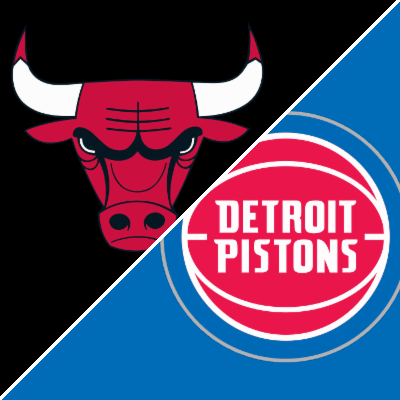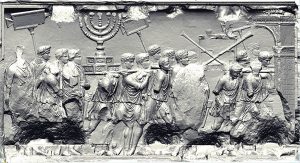They were known as the “Bad Boys”. The Detroit Pistons rose to power in the Eastern Conference of the National Basketball Association during the 1988-89 season. Thanks to their talent, toughness, aggressiveness, and swagger they took the Association by storm. But that had not stopped Chicago Bulls’ star, Michael Jordan, from lighting them up for 59 points in a single game that year, and 61 points in a game the year before, and the the Bulls won both games. Furious, Detroit Pistons’ head coach Chuck Daly vowed to find a way to stop Michael Jordan. His resulting game plan became known as the “Jordan Rules”.1

Equal parts mystique and reality, the underlying premise of the Jordan Rules were simple: make certain Jordan never got into a rhythm and try to exhaust him. When the Pistons had the ball, they would give it to whomever was being guarded by Michael Jordan. This was as good as wasting a possession and giving the ball back to the Bulls – Jordan was the reigning League MVP and Defensive Player of the Year – but to the Bad Boys, it was worth it to try and exhaust Jordan as much as they could so he could not carry the Bulls on offense.

When the Bulls were on offense, the Pistons would put their best defender on Jordan, and whenever Jordan went to the rim, the Piston defender would try and hit Jordan as hard as he could. “But when Jordan went by him, the real Rules were activated — knock the living hell out of Jordan when he drove to the rim. If he elevated — as he was wont to do — knock him out of the sky. Pound him. Punish him. Wear him down.”2
This was effective because Michael Jordan was the be-all and end-all for the Bulls. Everything they did ran through him. Their plan for crunch time? They did not have one. It just meant it was time for what was termed the “Archangel Offense”, after the Archangel Michael. The Chicago Bulls head coach Phil Jackson’s approach was “That’s where we give the ball to Michael Jordan and say, ‘Save us, Michael’ ”.3

Jordan, of course, was the best player in the NBA at the time, and the best in NBA history, so the Archangel Offense was not a bad idea, but it did leave them vulnerable to tactics like the Jordan Rules. The plan tried to overcome the Bulls by focusing on Jordan and making someone else beat them – they were happy to take their chances with someone else having the ball.
In 1988-89, the Bulls experimented by having Jordan play out of position at point guard to help counter the focus on him by letting Jordan involve his teammates more while letting him get more rest.4 The Bulls promptly steamrolled opponents with Jordan running the show and made it to the Eastern Conference Finals for the first time in Jordan’s career, before they ran aground against… the Detroit Pistons.

The Pistons, for their part, were happy to have Jordan initiating the offense for the Bulls. Pistons star Isiah Thomas and fellow guard Joe Dumars made a suggestion to their coach “Let’s not let Jordan beat us again. Let’s take a chance on letting their other guys beat us instead”.5 And it worked – using the Jordan Rules, the Pistons dispatched the Bulls and went on to winning the Pistons’ first-ever NBA Title. With their triumph over the Bulls, the focus on the Bad Boys and the Jordan Rules exploded, and its reputation grew into a myth larger than life. It actually turned into a psychological ploy as well. Pistons forward, Rick Mahorn, later said of the importance of the media focus on the ‘Jordan Rules’: “We were just throwing stuff out there. It was just a joke. Chuck throws it out there that we had some [top] secret plan to stop Jordan, and everybody just jumped on it. Everybody was writing stories about this strategy. When we kept reading about it, Isiah [Thomas] told us that we had gotten in their heads, and that’s how we had them beat.”6
In the season of 1989-90, Phil Jackson tried to prepare his team for the Jordan Rules. Still smarting after their Playoff series loss to the Pistons, he instituted the ‘Triangle Offense’. The idea was that all five players would be staggered around the floor in a certain way with three of them in the shape of a triangle, allowing for whoever had the ball to pass to any of his teammates and create ample opportunities for space to operate and involve others.

Once again, the Bulls piled up the wins in the regular season, finishing as the team with the second best record in the East, behind their longstanding rival, the Detroit Pistons. The two teams met in the Eastern Conference Finals rematch, where the Bulls pushed the Pistons to the brink, but lost a hotly contested Game 7 on the Pistons home floor, and the Pistons went on to win their second consecutive Championship. Encouraged by just how close they had come, Jackson had the Bulls double down on the Triangle Offense… and the next year, in 1990-91, the Bulls finally broke through.
That year, the Bulls finished in first place in the Eastern Conference, guaranteeing themselves home court advantage throughout the playoffs. For the third year in a row, the Bulls and Pistons played to determine who would represent the Eastern Conference in the NBA Finals, but this time, things were different. With an additional year of experience mastering the Triangle Offense, and with a strong supporting cast that could make opponents pay for focusing solely on Jordan, Jordan and the Bulls swept the Pistons in four games. Led by Isiah Thomas however, in a stunning display of bitterness and poor sportsmanship, most of the Pistons team walked off the floor with only a few seconds to go, so they could avoid congratulating the Bulls in a show of disdain and defiance. Only two Pistons shook hands with the Bulls once the buzzer sounded. While Thomas’ legacy as an NBA Hall of Famer is tarnished by this episode, he admitted he regretted his decision. When asked if he would do things differently if he could, he was quick to respond. “Absolutely. Looking back, in terms of what has happened, had I a chance to do it all over again, I would take the high road.”7

The Bulls dynasty and the Pistons would never meet again in the playoffs. The Bulls went on to win six NBA Titles in eight years, including two separate threepeats, interrupted only by the two years of Michael Jordan’s brief retirement before he returned. Micheal Jordan became universally acknowledged as the greatest NBA player of all time in the wake of the Bulls’ breakthrough, and became hugely influential in everything from shoes to logos.

The Pistons started to decline as their key players either left or retired, and have never made a Conference Finals since. Phil Jackson went on, in addition to his six titles as coach of the Bulls, to win five more titles as head coach of the Lakers using his Triangle Offense. While the rivalry between the Bulls and the Pistons burned bright and consumed the NBA, its fierceness is belied by the short time frame of its existence, only a few years in length. Yet, even now, the phrase “Jordan Rules” is still in the public mind, and the Bulls/Pistons rivalry remains one of the most famous episodes in NBA history.8
- Jack McCallum, “Mission Impossible,” November 1989, Sports Illustrated, https://vault.si.com/vault/1989/11/06/mission-impossible-no-one-shuts-down-michael-jordan-but-the-champion-detroit-pistons-have-developed-an-intricate-defensive-system-called-the-jordan-rules-that-comes-close-to-containing-him. ↵
- David Aldridge, “Bad Boys, Jordan Rules, Mariah, and More: These Palace Memories Will Endure,” November 2016, NBA.com, https://www.nba.com/article/2016/11/28/morning-tip-best-memories-palace-auburn-hills-detroit-pistons. ↵
- Harley Tinkham, “Bulls Have a Play for When It’s Beyond ‘Hail Mary’ Time,” May 1990, Los Angeles Times, https://www.latimes.com/archives/la-xpm-1990-05-28-sp-109-story.html. ↵
- Dan Devine, “How the Point-MJ Experiment Foreshadowed the Modern NBA,” March 2020, The Ringer, https://www.theringer.com/nba/2020/3/11/21174817/michael-jordan-triple-doubles-1989-chicago-bulls. ↵
- Chicago Tribune Staff, The Chicago Tribune Book of the Chicago Bulls: A Decade-by-Decade History, (Evanstown Illionois: Agate Midway, November 2016), pg 17. ↵
- “Chicago Bulls and Detroit Pistons Rivalry,” October 2009, Sportstalkline.com, https://directory.sportstalkline.com/sport/514157/chicago-bulls-and-detroit-pistons-rivalry-2-2/. ↵
- NBA TV, “Isiah Thomas Regrets ’91 Walkoff Against Bulls,” October 2013, NBCChicago.com, https://www.nbcchicago.com/news/sports/chicago-bulls-detroit-pistons-isiah-thomas-michael-jordan-nba-playoffs/1964192/. ↵
- Alonzo Warond, “Top 10 NBA Rivalries of All-Time,” April 2017, FadeawayWorld, https://fadeawayworld.com/2017/04/19/top-10-nba-rivalries-of-all-time/. ↵



34 comments
Eliane Castorena
I have always been a big fan of basketball and the NBA, but I did not know about the history behind the rivalry between the Bulls and the Pistons. The “Bad Boys” certainly had their great moments where they were victorious against the Bulls and Micheal Jordan, but also showed awful sportsmanship in a game that the Bulls won against them. The article did a very great job in telling the story, so the focus would not only be on Micheal Jordan, but, also, on the Pistons and their strategy with the “Jordan Rules”.
Brandon Torres
Being that I have a dad who was in love with the Jordan era of basketball, I am very familiar with the events that occurred between the Bad Boy Pistons and Jordans’ Bulls. I love how the author properly conveyed the coaching techniques of Phil Jackson’s triangle offense and how truly effective it was enforced! The author did not simply mention, but he explained beautifully without leaving out any key details in understanding it!
Amanda Shoemaker
It’s very interesting to me that the Pistons had to create an entire game play in order to beat just one player. This article did a really good job of showing how Michael Jordan, being such a wonderful basketball player, affected other teams so much that they had to create rules to beat him. I never knew that the piston’s were so bitter towards the Bulls when they beat them in the playoffs.
Hali Garcia
This is a very informative article on the Pistons and the Jordan Rules. I do watch basketball but not that much so I did not know about the Jordan Rules. It is interesting to read about how the Pistons only focused on Michael Jordan because he had beat them before. What struck me was when the Pistons defeated the Bulls using the Jordan Rules, the Bulls came back using the Triangle Offense. Great job Stephen!!
Andres Ruiz
Legacy players like Jordan, whose presence very profoundly changed basketball,are always interesting to me as they create a ‘crisis mode’ for other teams who were behind on the change. Whenever a player like Jordan shows up to any sport, there is an initial rush to see what that player is doing, and to see if there is any other talent who can match that. If the team is unable to match the talent of that opposing player, then the interesting strategies to circumvent the skill gap can often be seemingly simple or downright mean to some, but I believe that there is a place for it in terms of entertainment.
Nathaniel Bielawski
I don’t exactly keep up with basketball, but the Jordan Rules have got to be the worst sportsmanship the NBA has ever seen. It is unfair, let alone dangerous, to target a single player to “weaken” them just to turn out victorious in a ball game. This is yet another example of a rivalry going a bit too far. Hopefully the NBA will learn lessons from the Jordan Rules and implement safeguards to protect players.
Thiffany Yeupell
Its rather interesting that there was a strategy developed to counteract one specific individual on the basketball court, leaving the other players in the dust. I imagine that this speaks volumes of Michael Jordan’s talent, but credit is due when the Jordan Rules had succeeded in their purpose. On the court and psychologically, a good play seems to take control of the situation and maneuver it into their ideal zone.
Matthew Avila
I’m not into basketball myself more of a football guy, but this article was very interesting. I never heard of the Jordan rules but I think its kind of funny that a team would have to make intense rules to specifically take out one person. in the end the Pistons beat Michael and won the title also a couple more after, but later on the bulls developed the triangle offense and won more.
Giselle Garcia
I am familiar with Michael Jordan and his amazing basketball career, but I never heard of the “Jordan Rules” that the Detroit Pistons utilized to beat the Bulls. The Bulls fought back a year later by crafting and using the “Triangle Offense”, but lost again in the Finals. Yet, the next year, the Bulls managed to sweep the series and won the championship with their hard efforts. It’s interesting to note that the Pistons demonstrated unsportsmanlike conduct which resulted in their places in the Hall of Fame gone.
Nelly Perez
Not much of a basketball fan, but this was interesting to read. The Detroit Pistons were well known for taking the NBA by storm. However, they decided to create a plan to defeat the Bulls’ top player, Michael Jordan. The team created the Jordan Rules which messed with the opposing team psychologically and physically. Then, the Bulls did the same by creating the Triangle Offense. The Triangle Offense basically involved three players to form a triangle on the field.